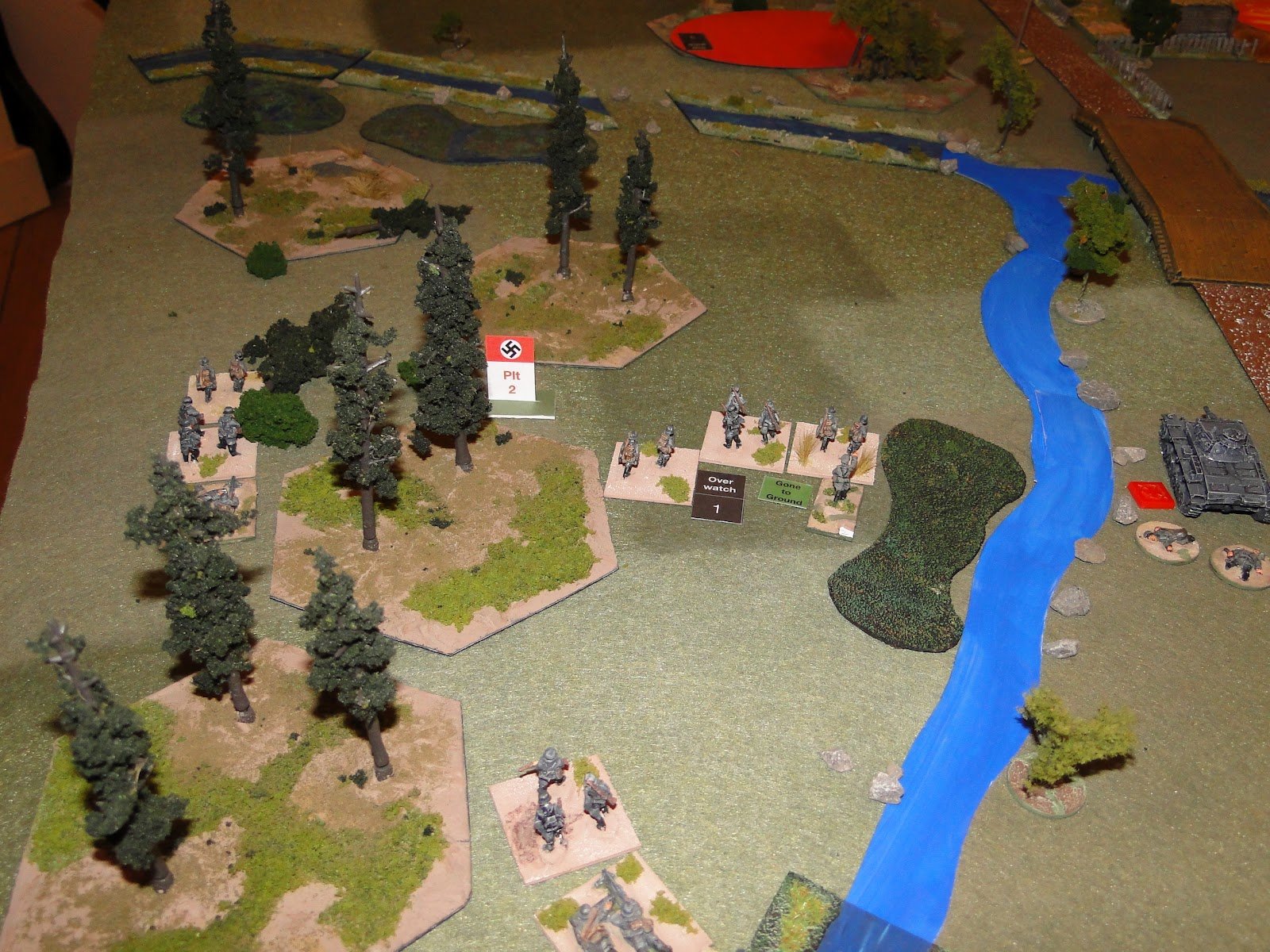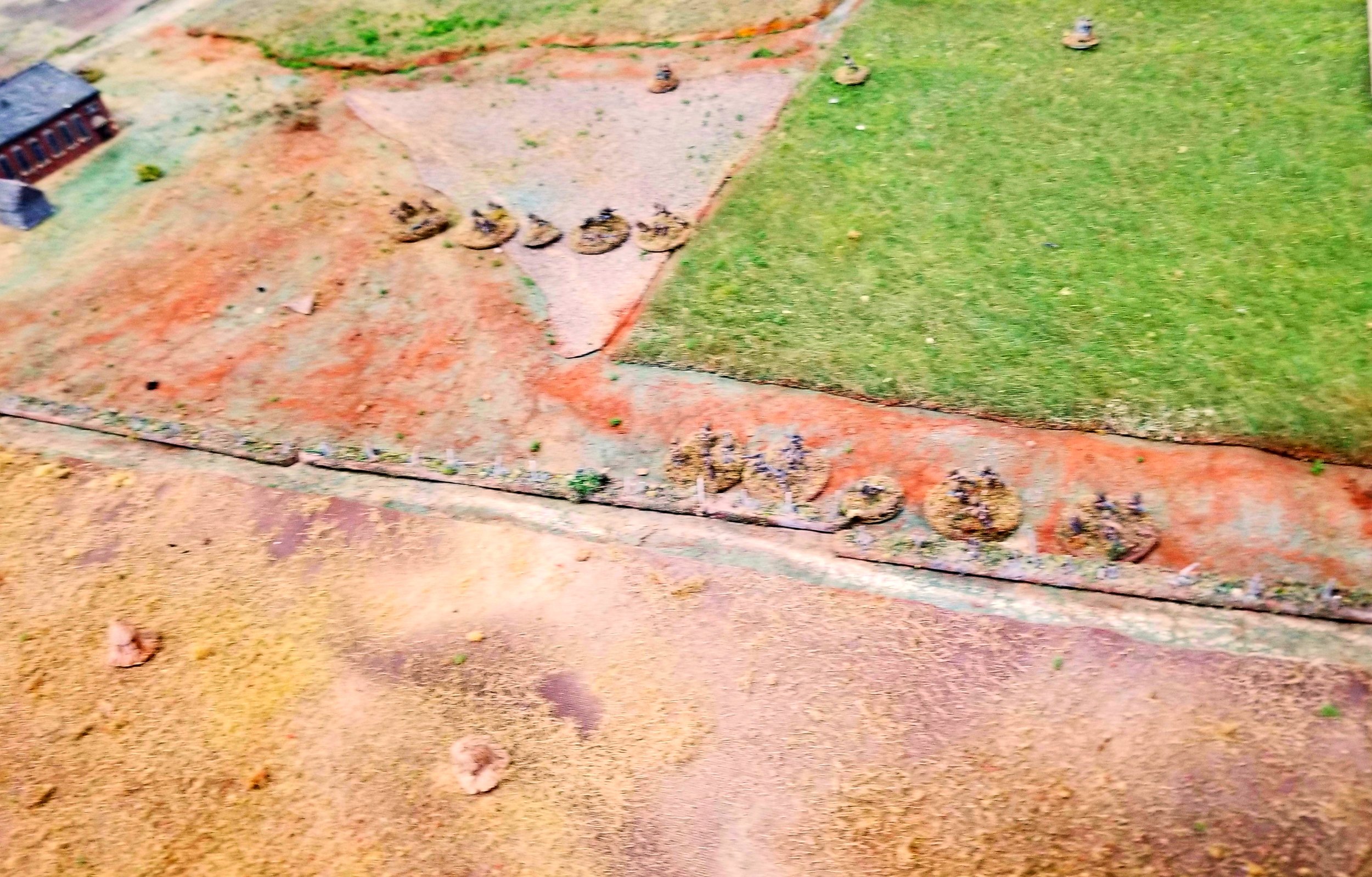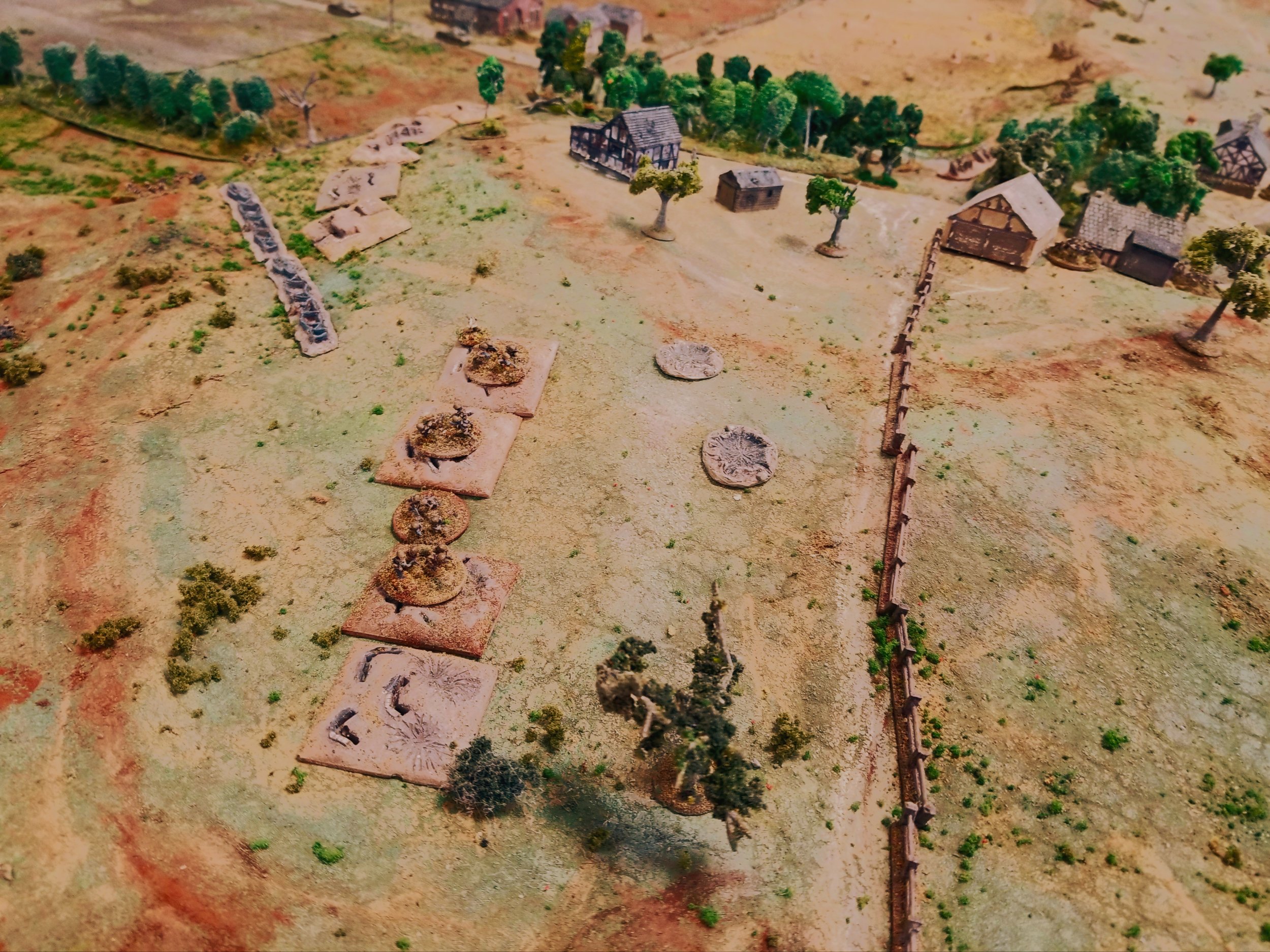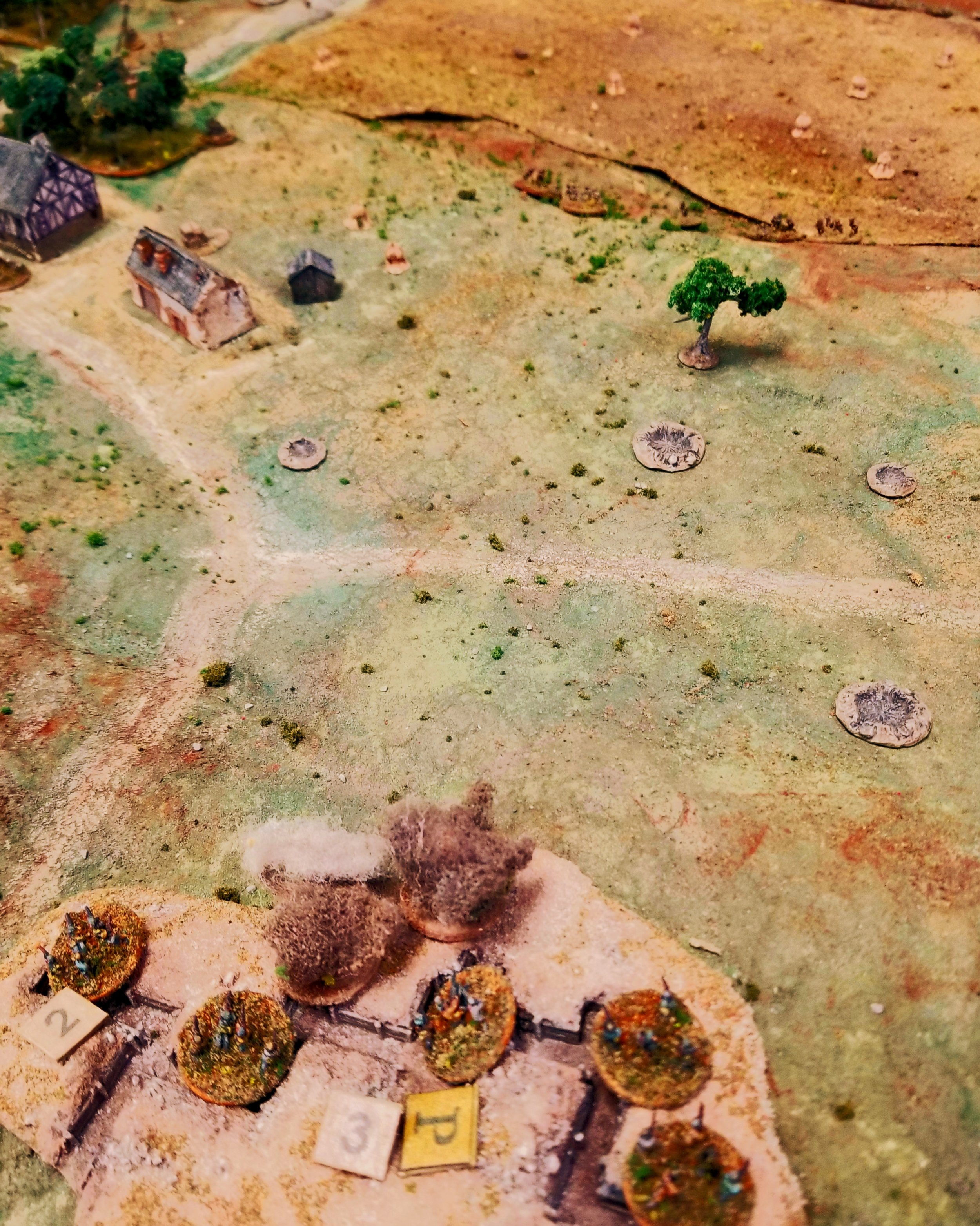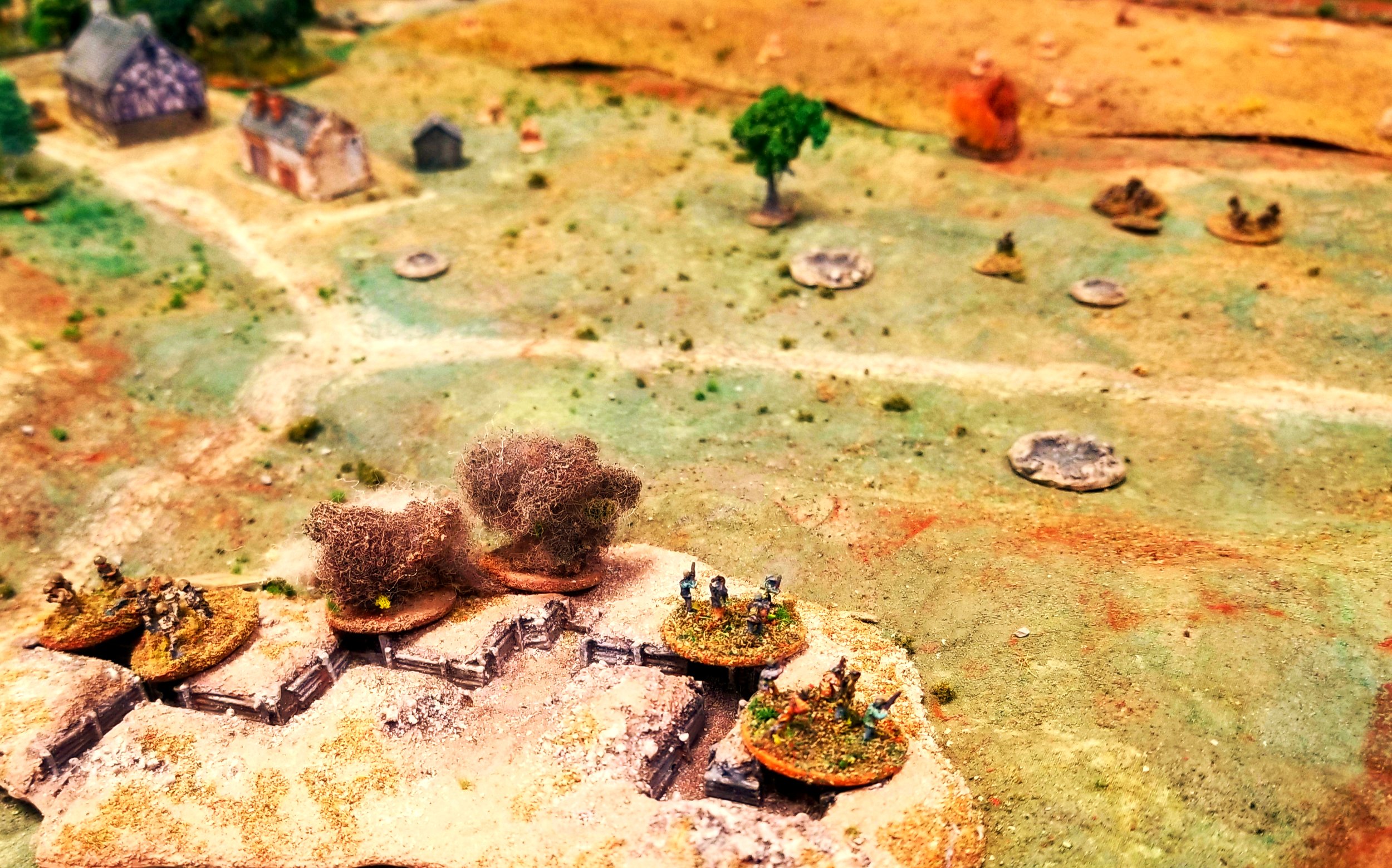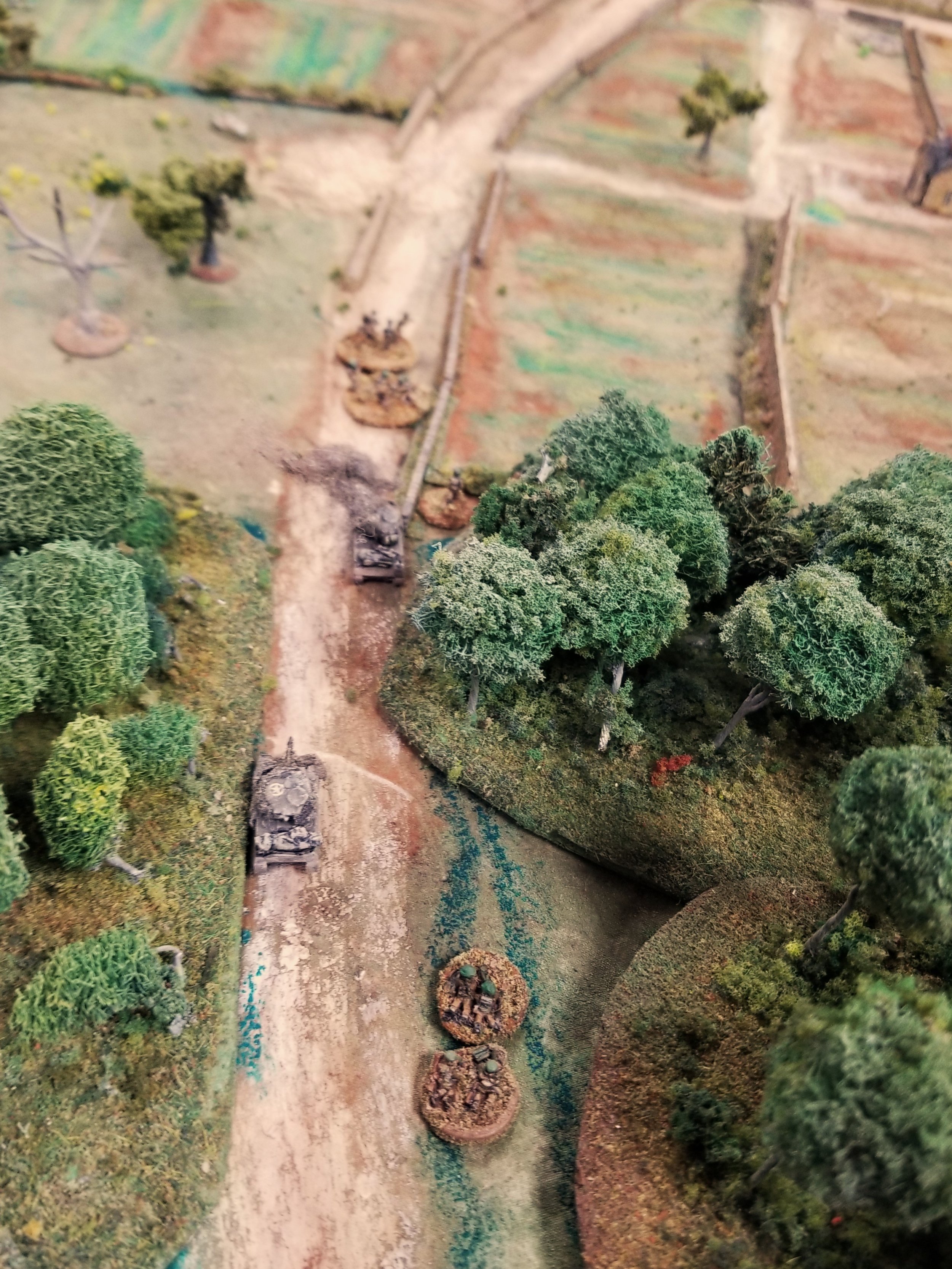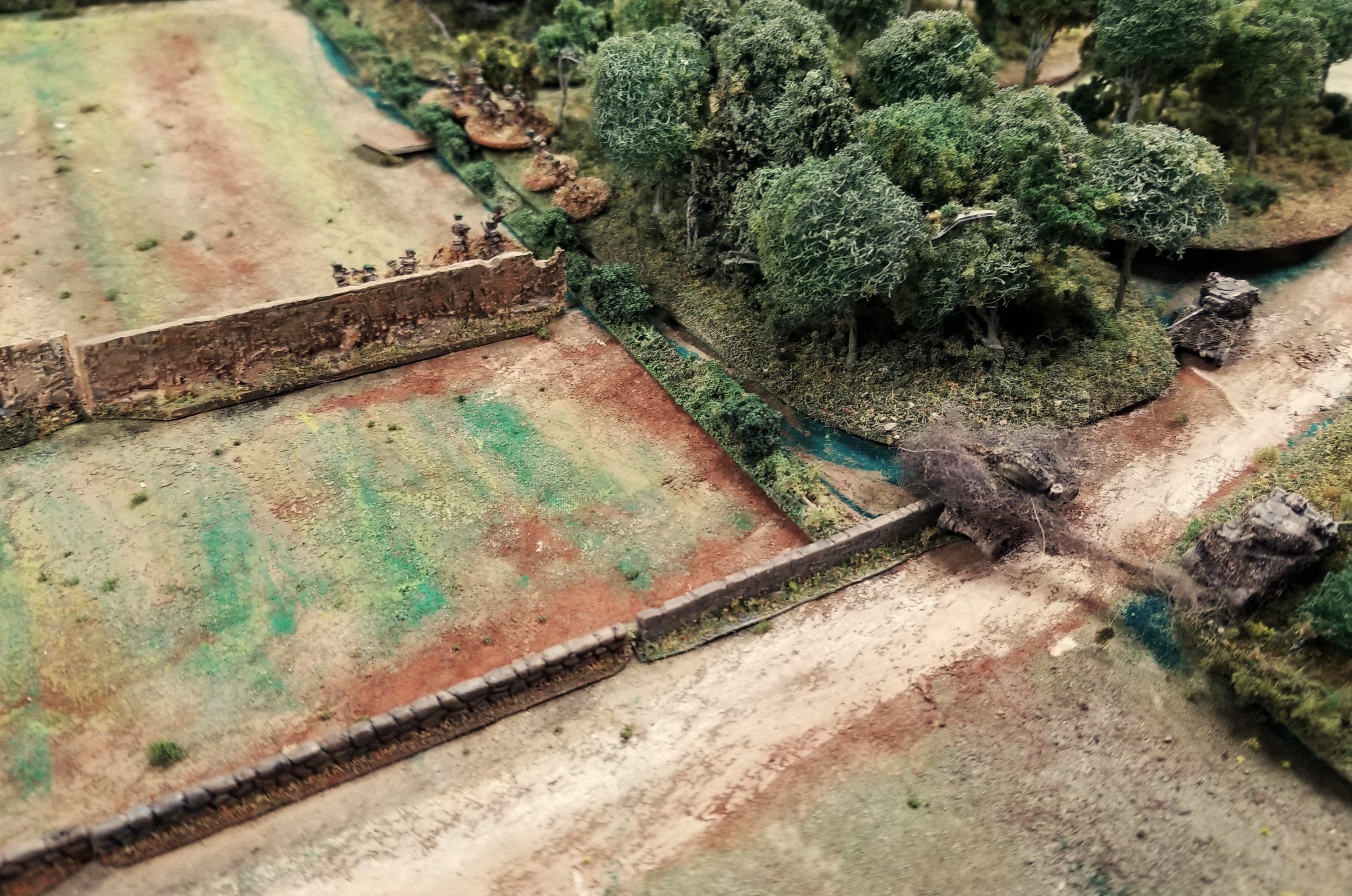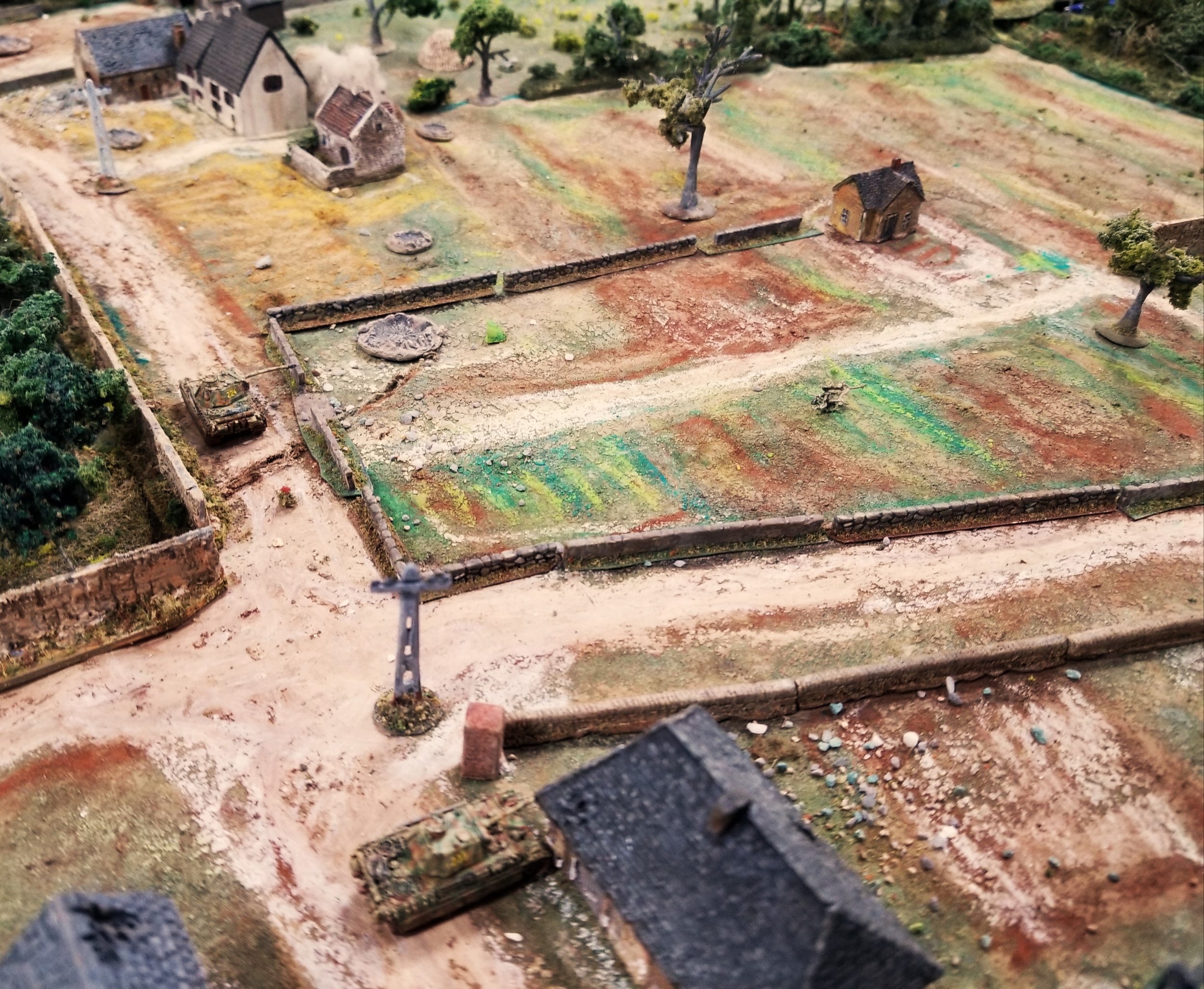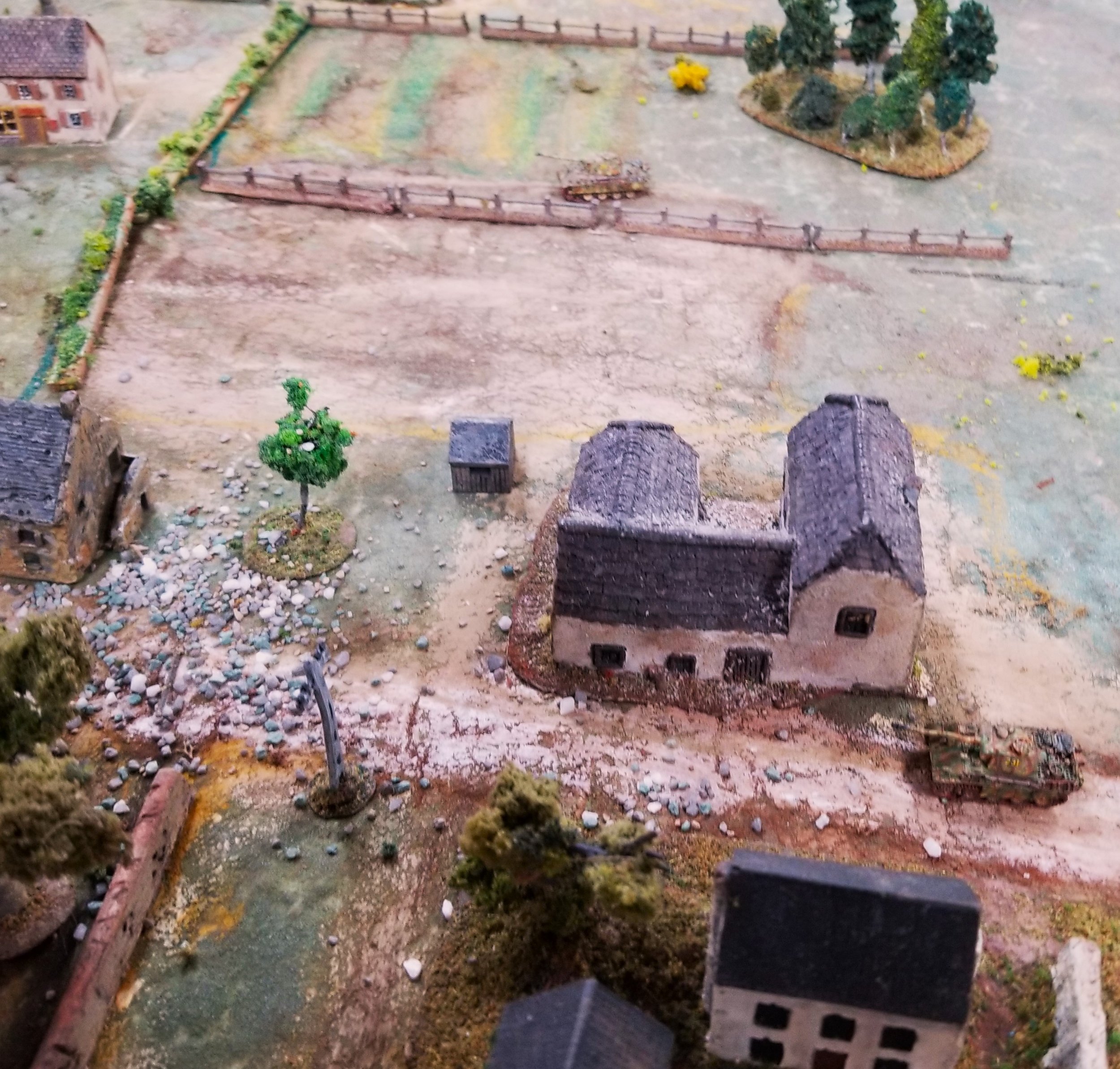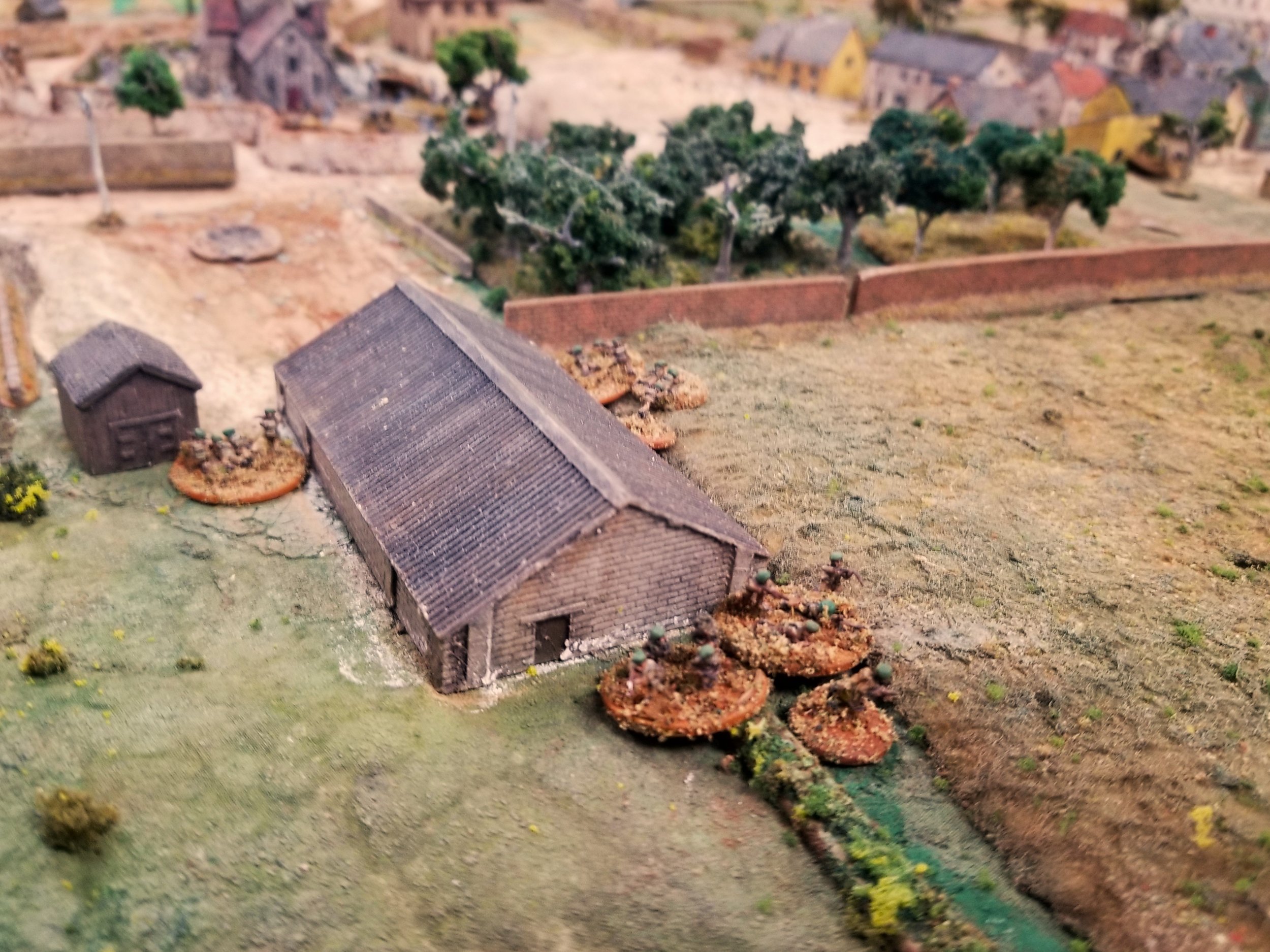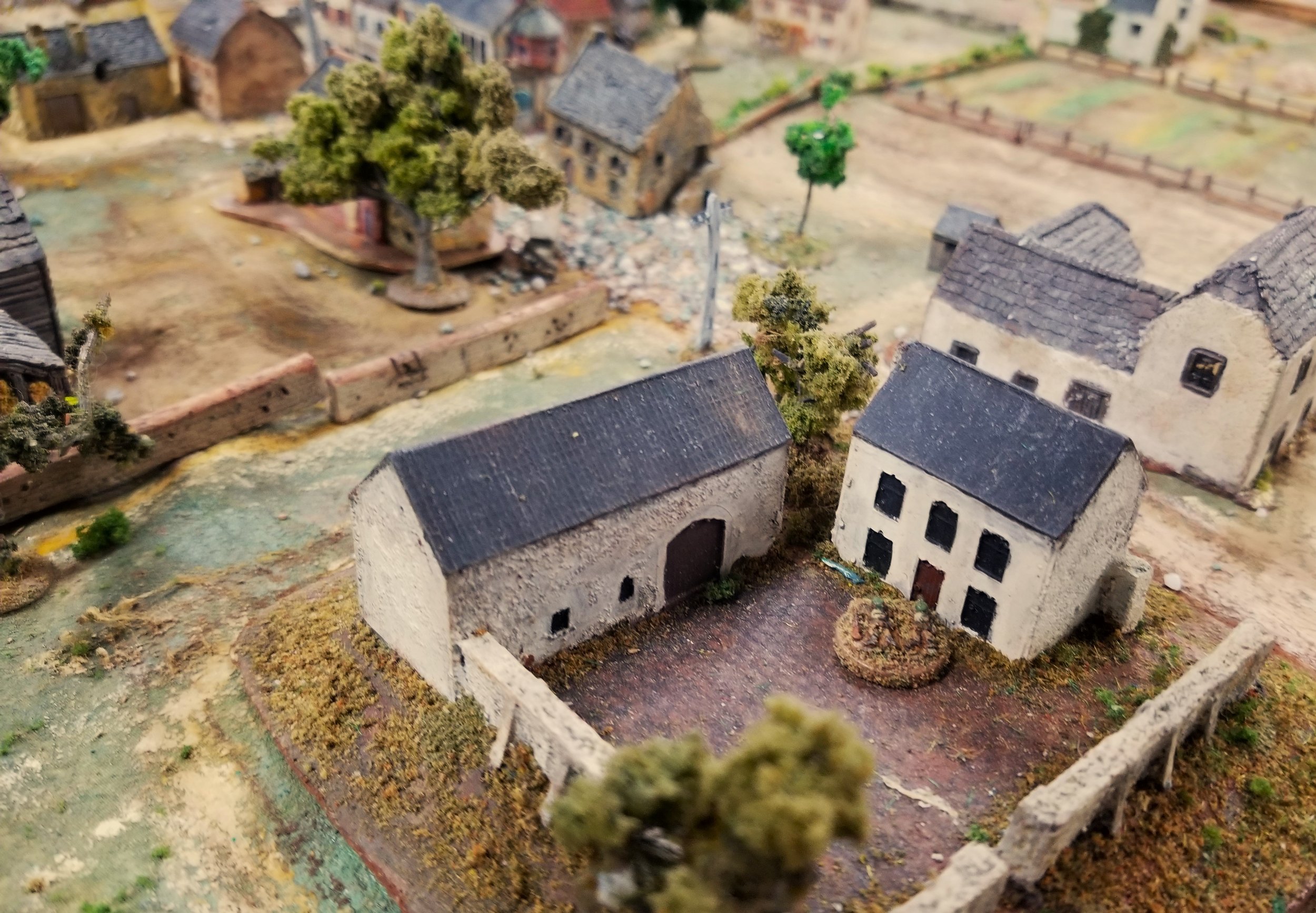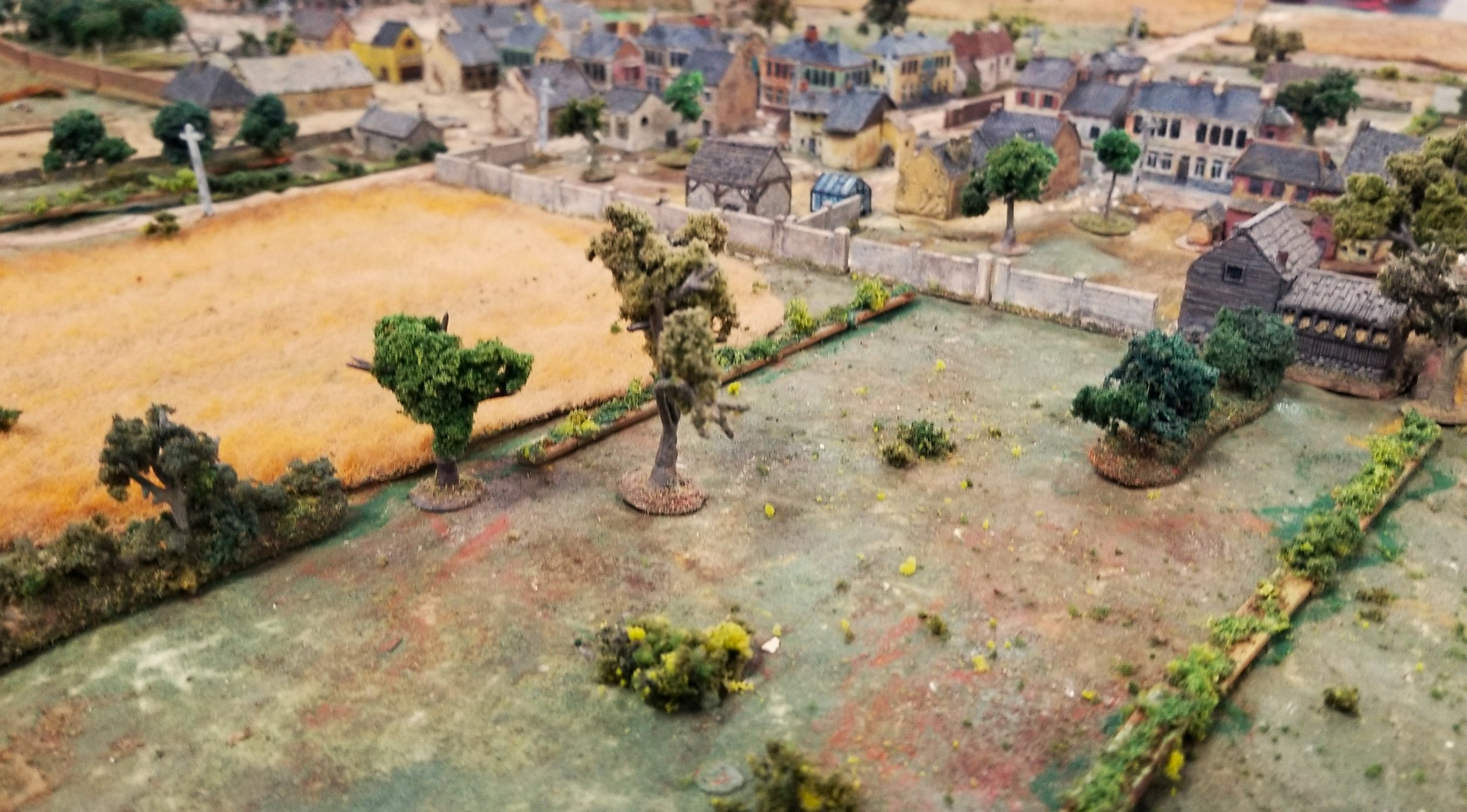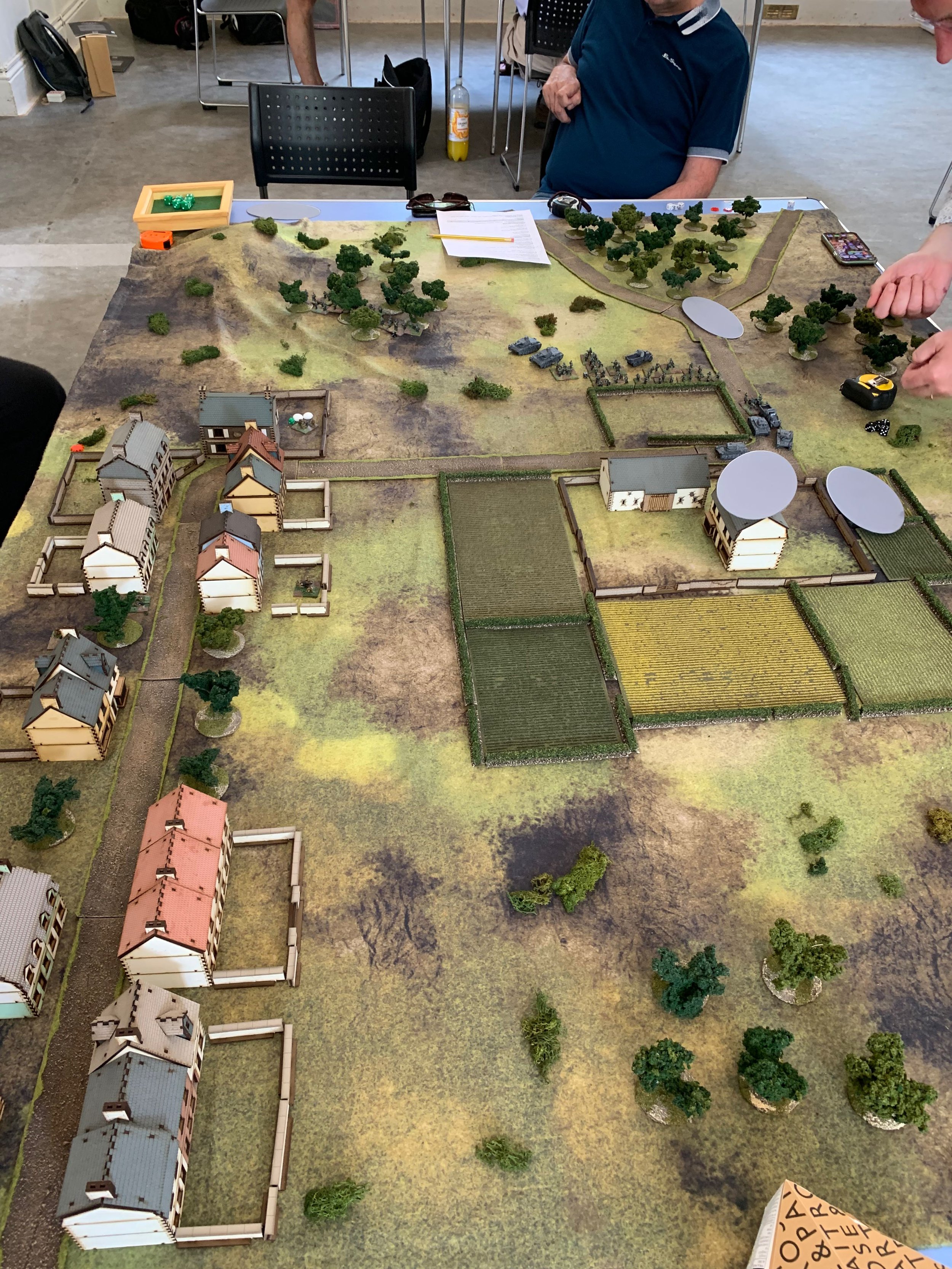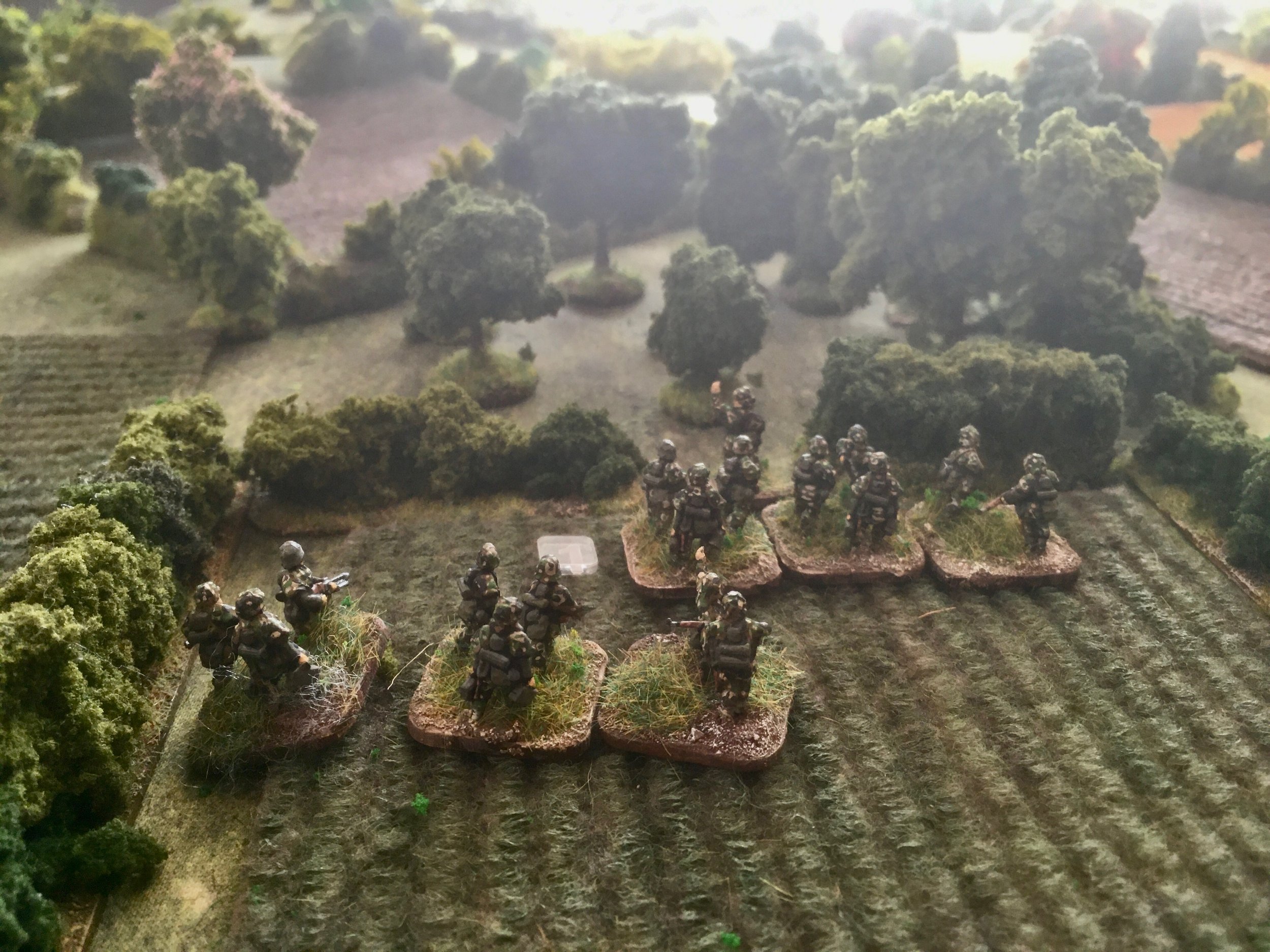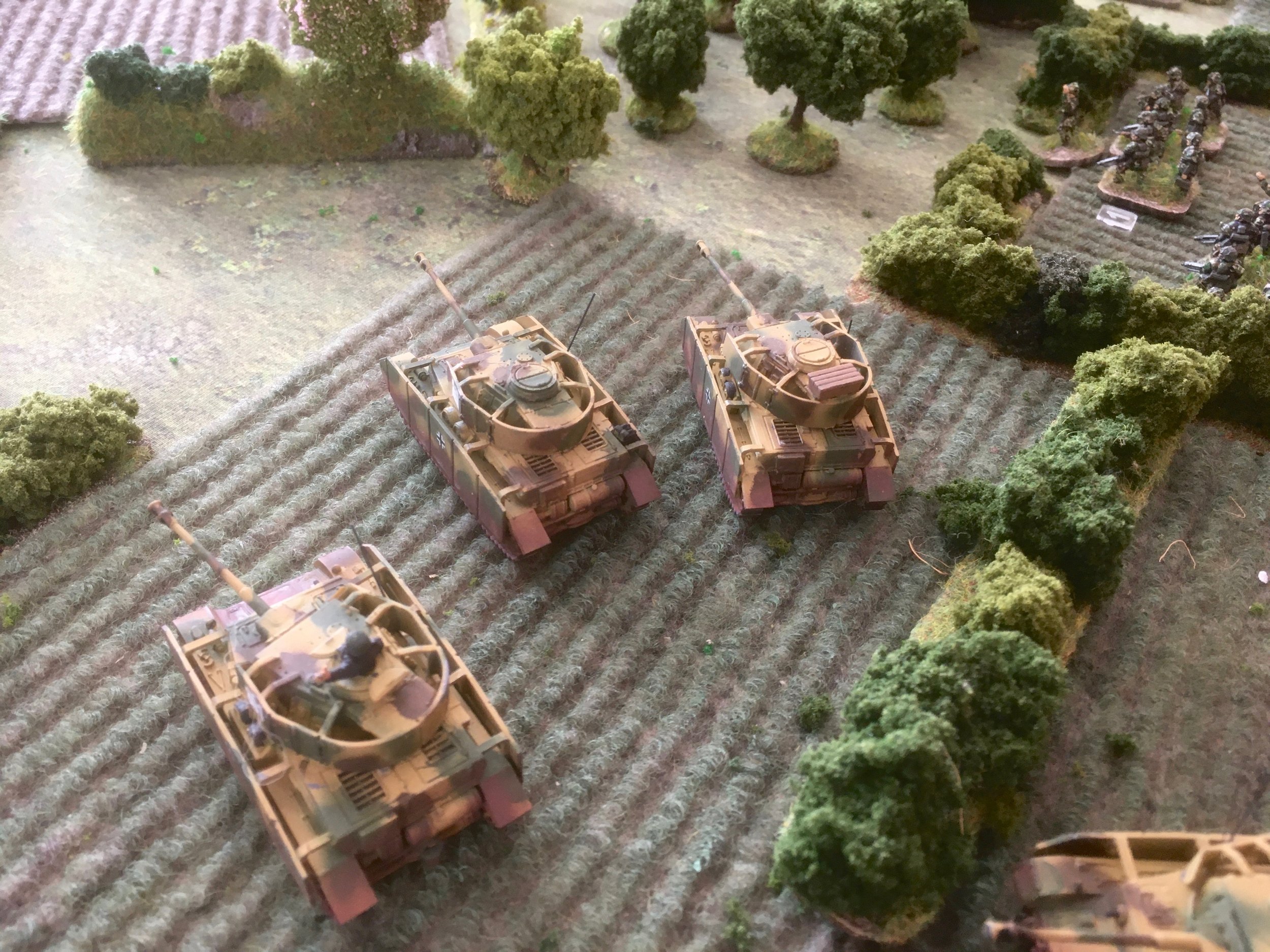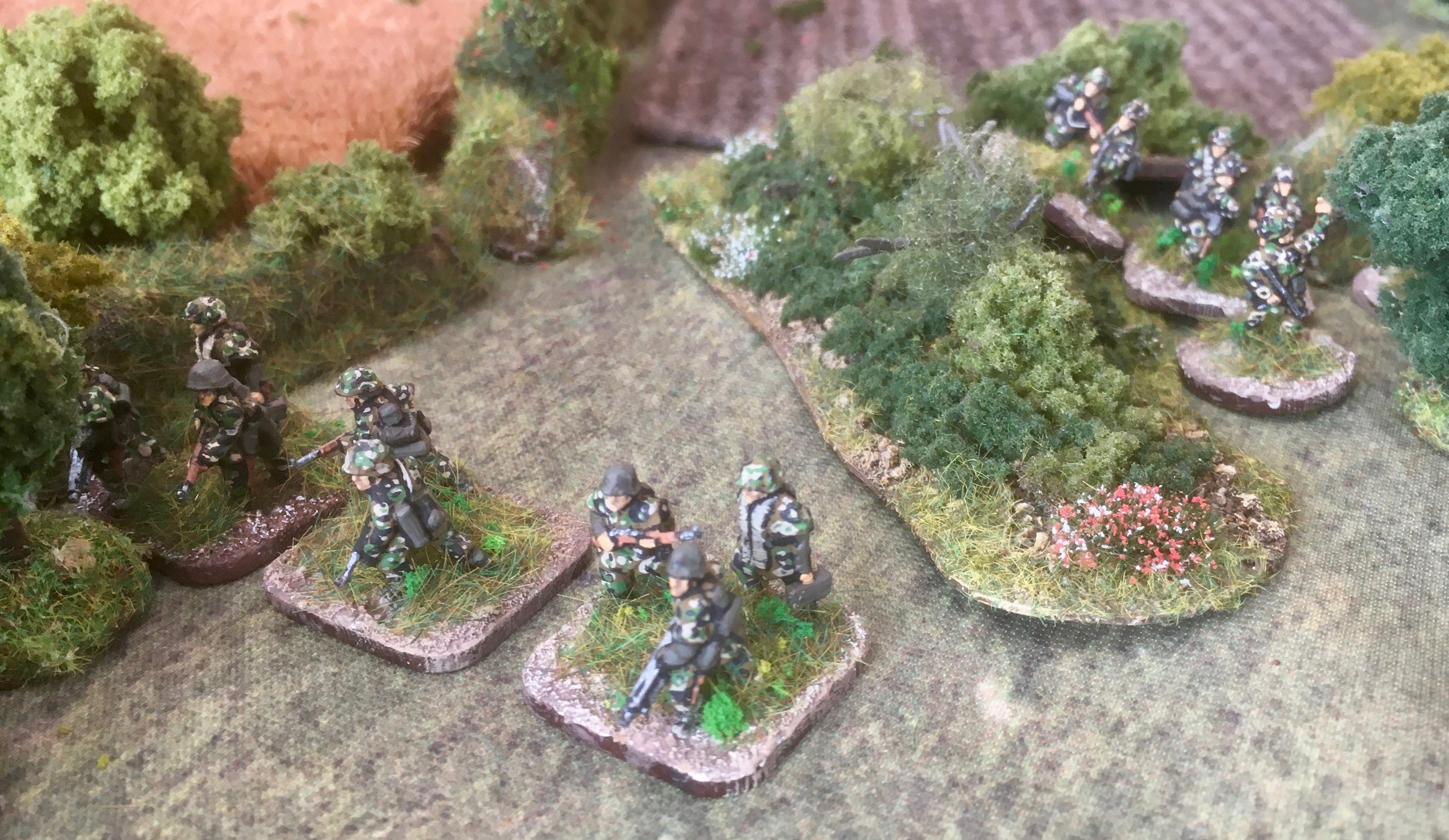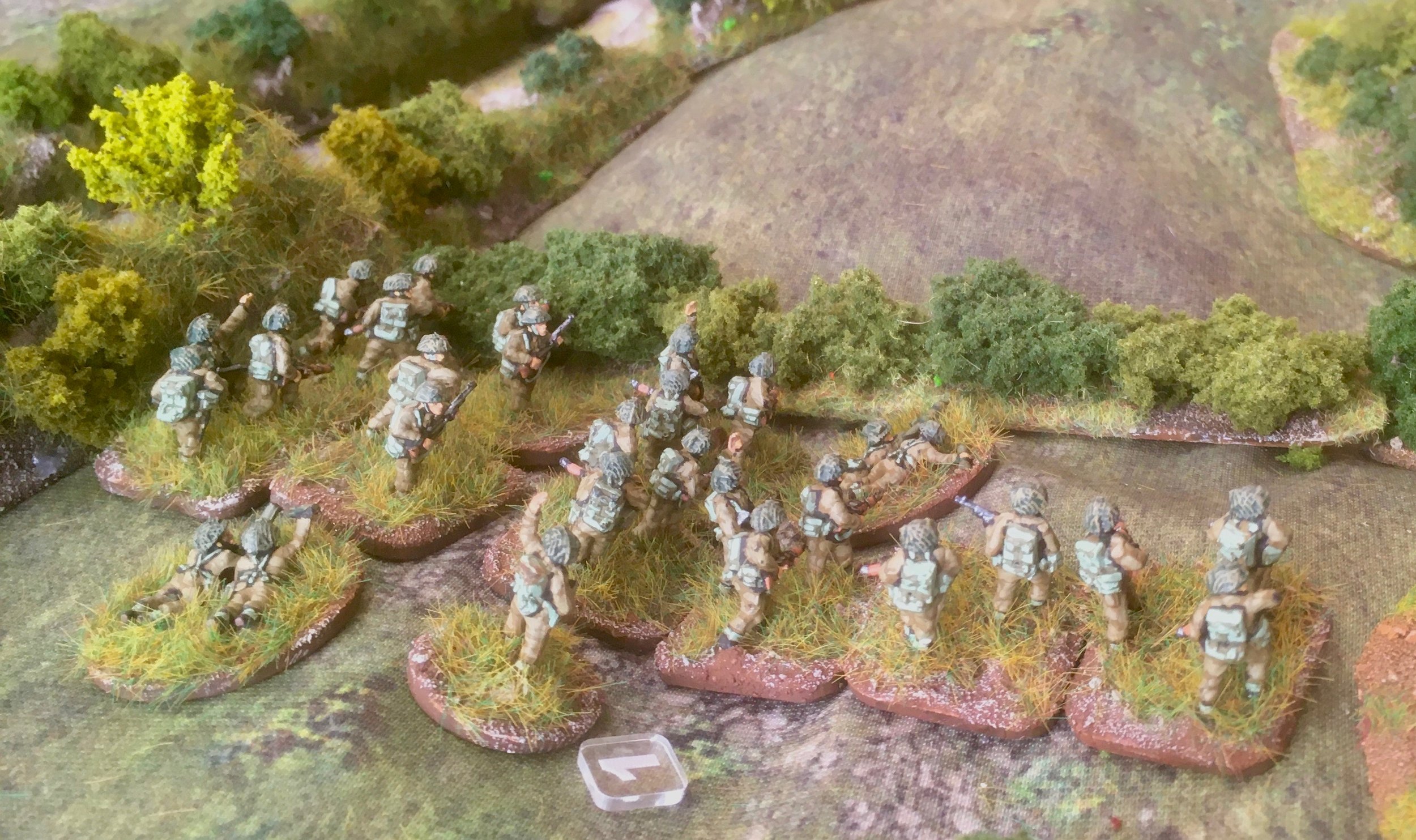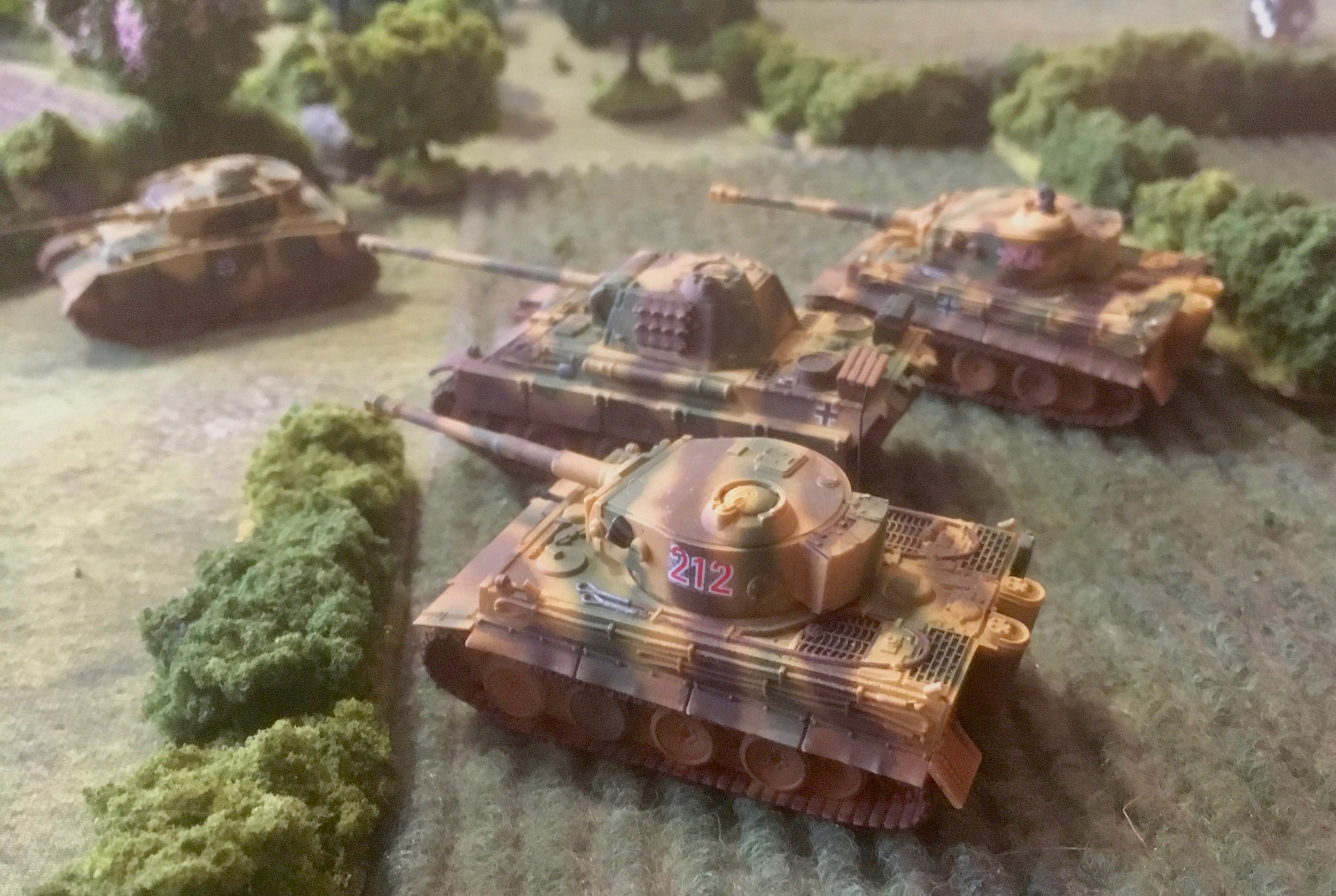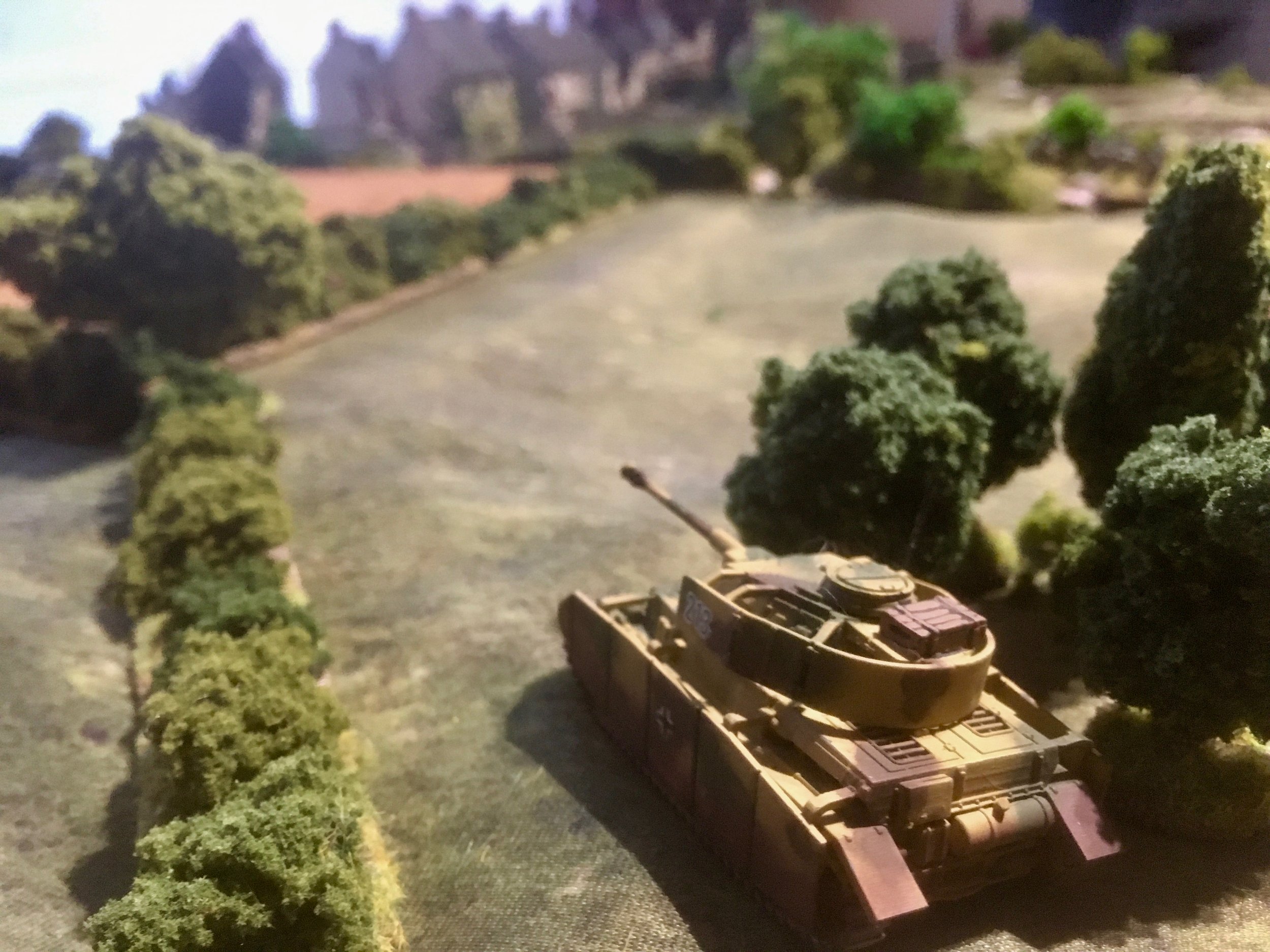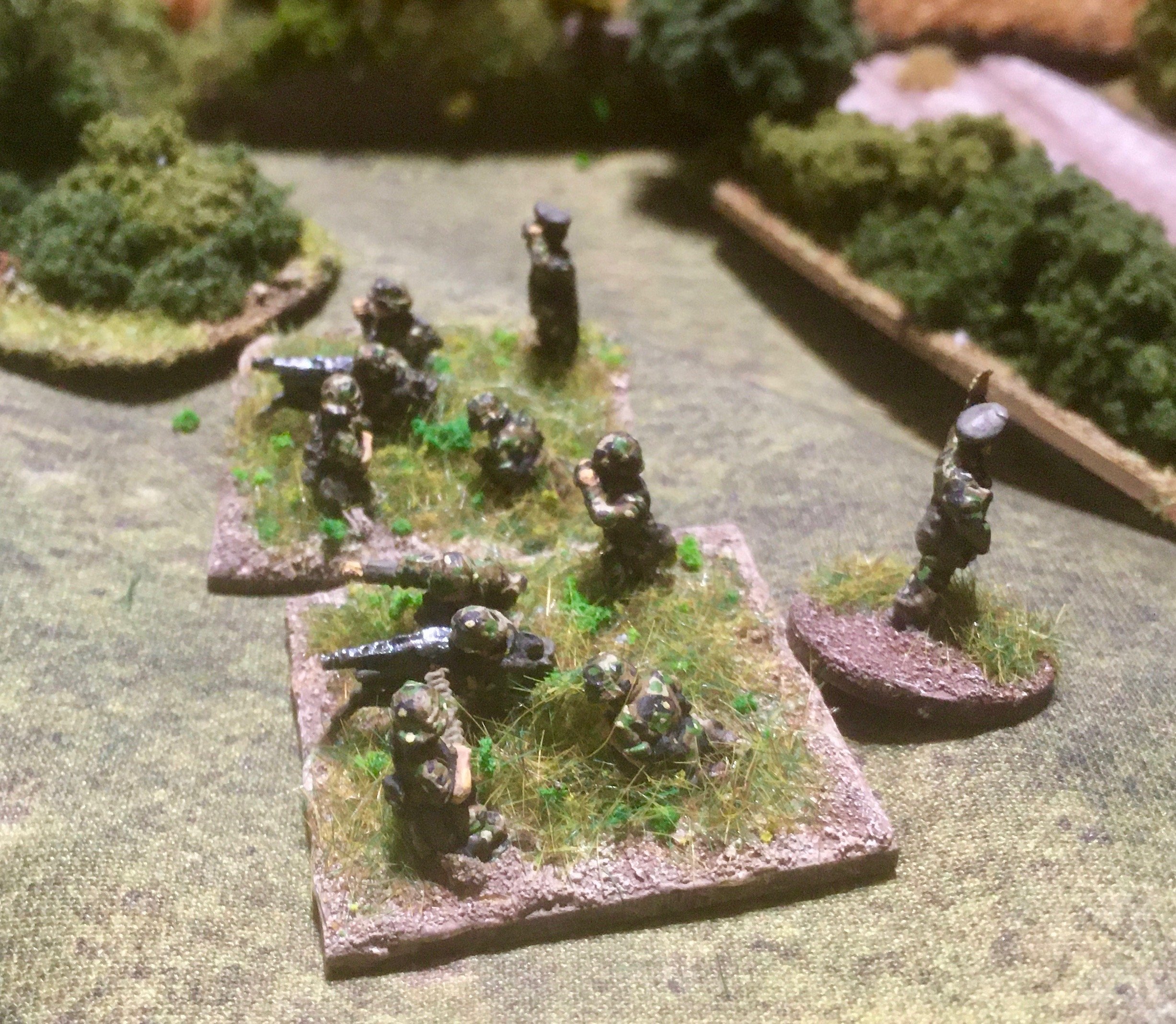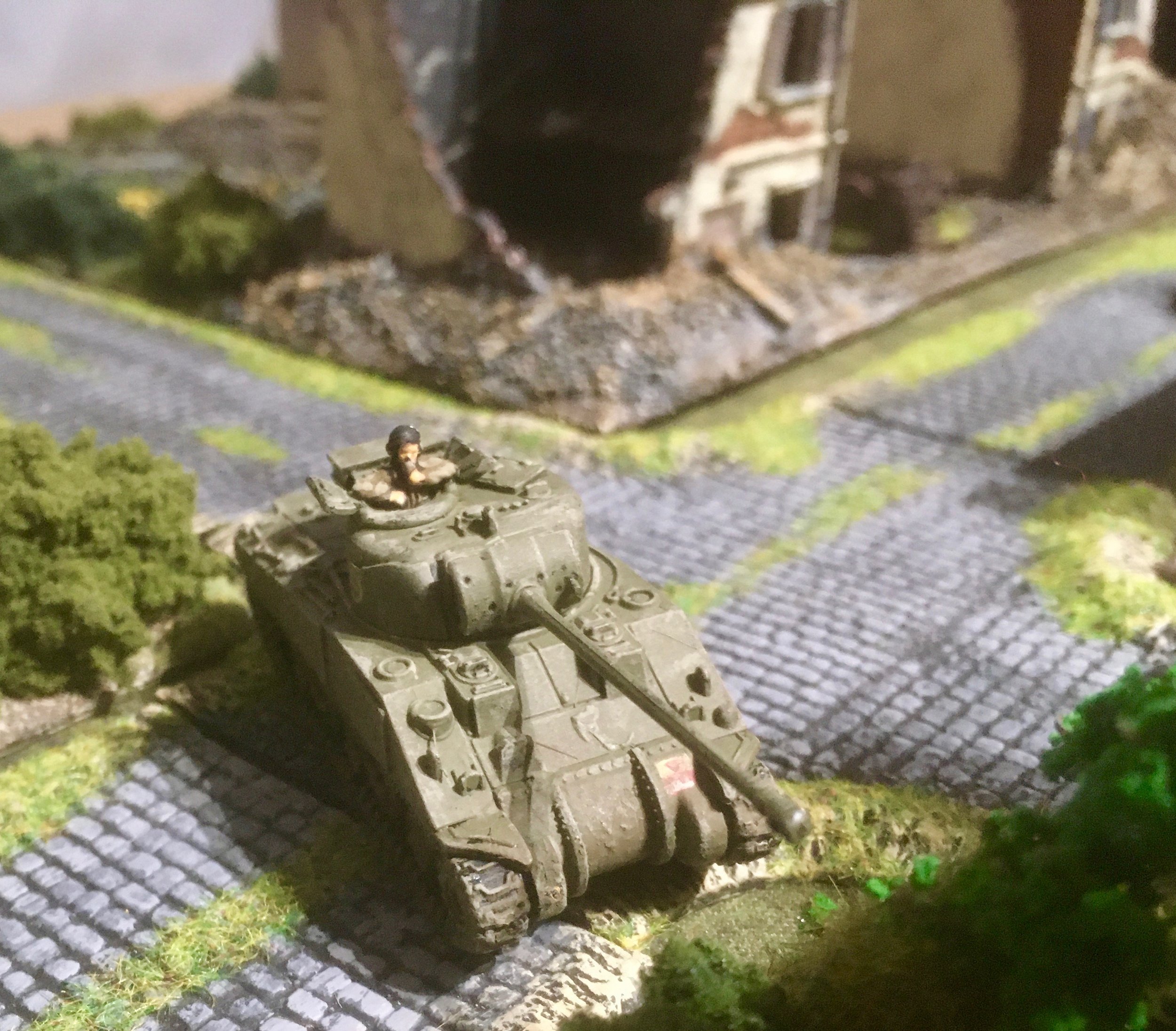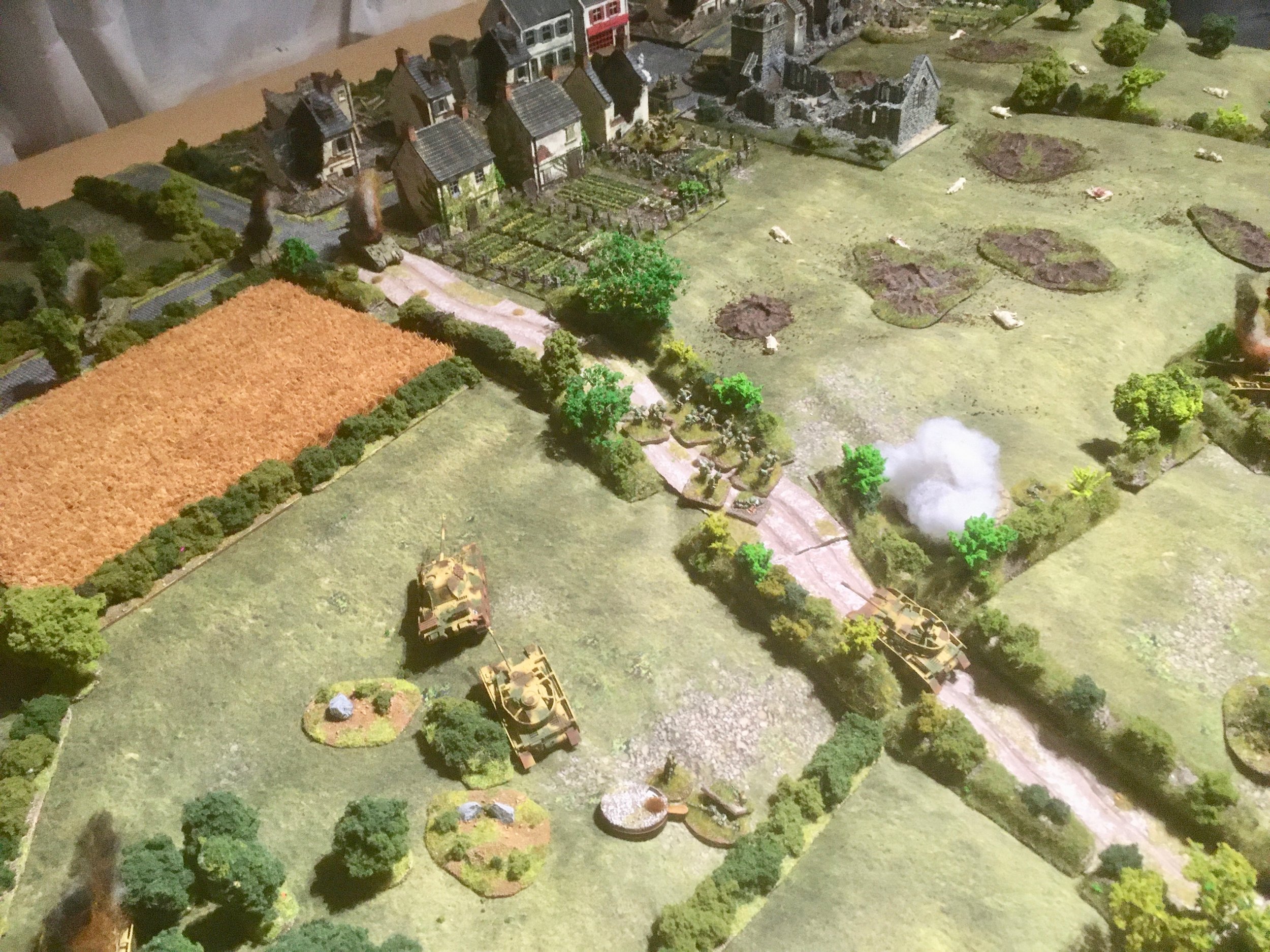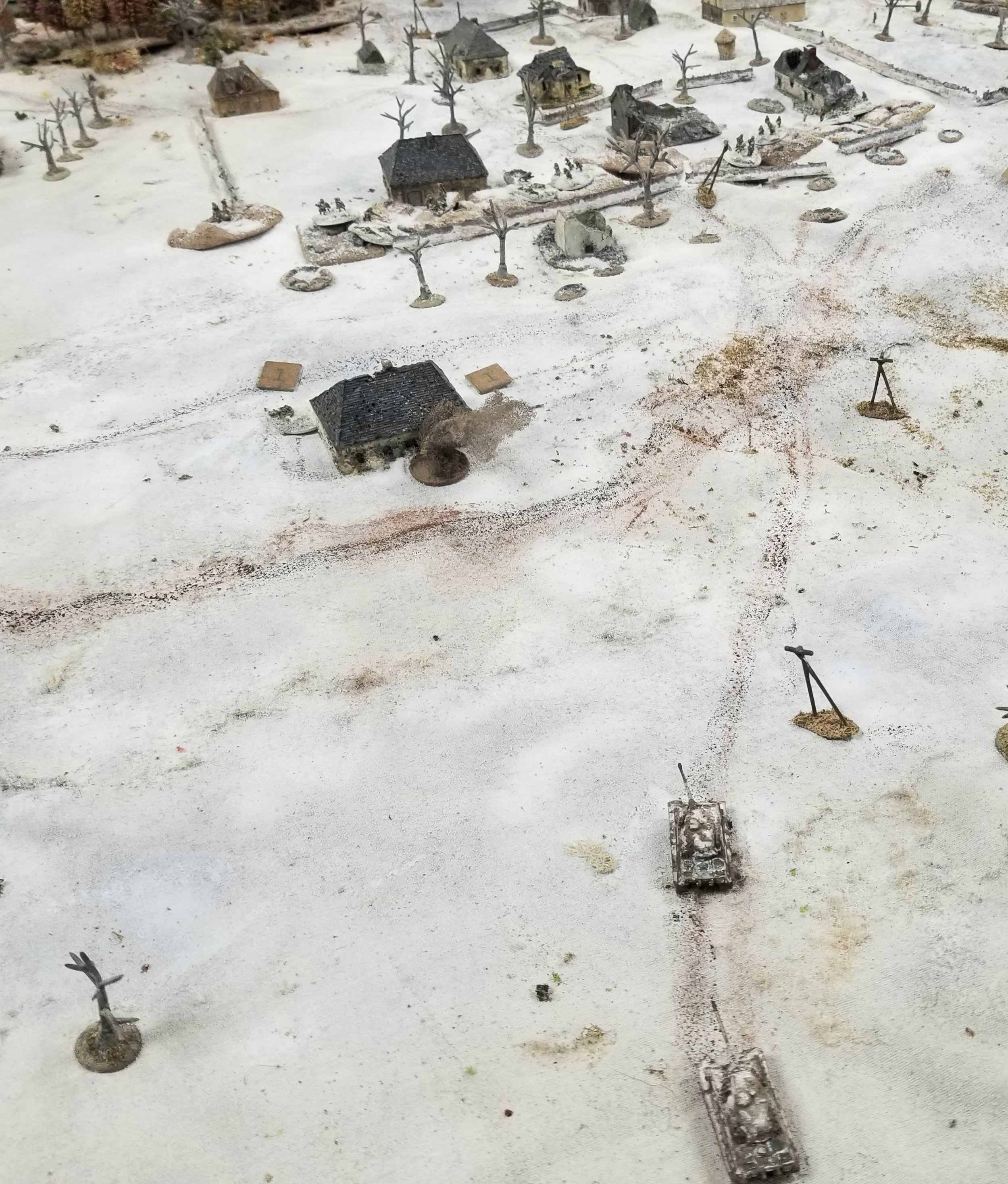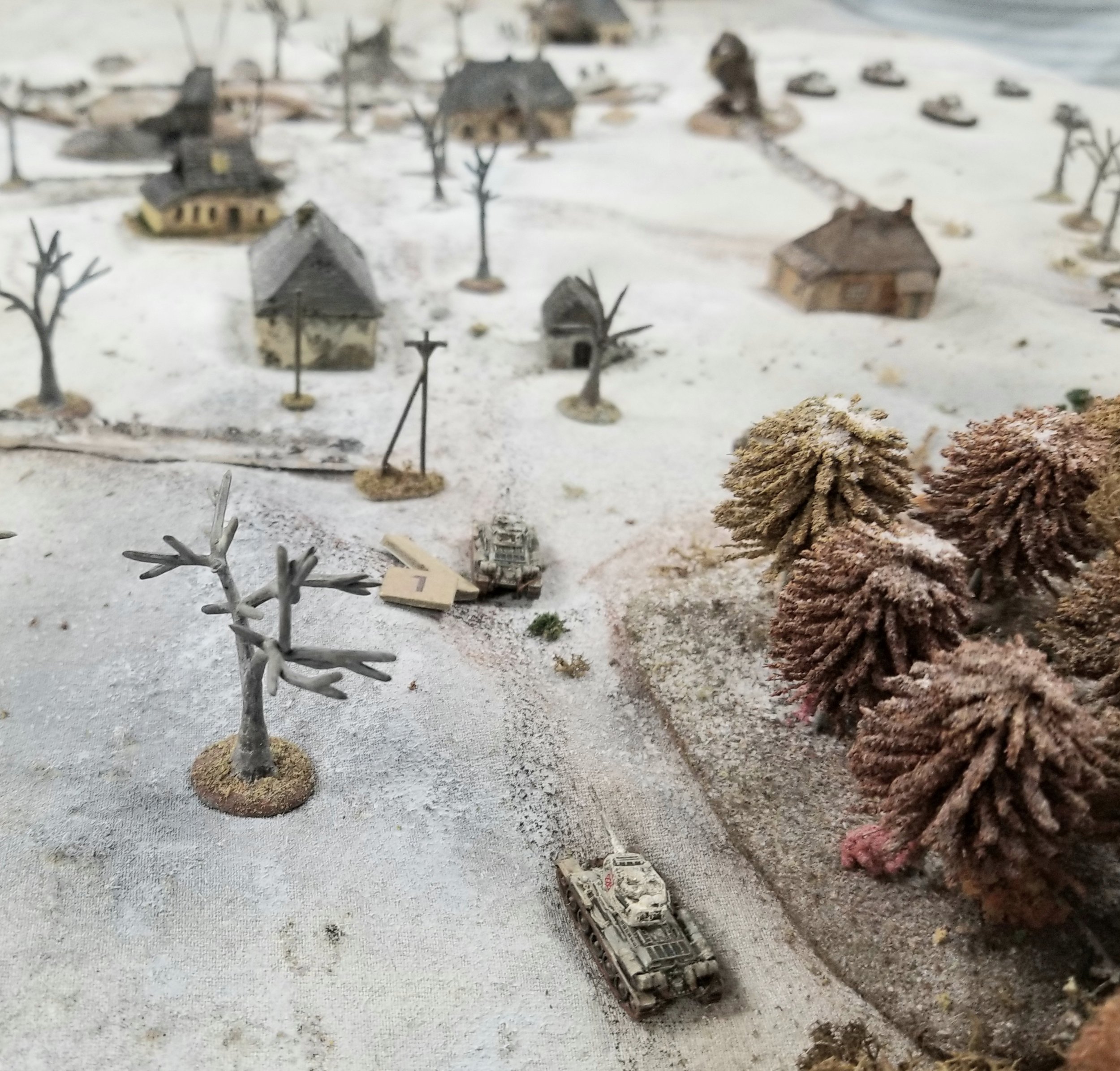Had a great time a few weeks backs hosting/umpiring a game of the German attack on La Fiere on the afternoon of June 6th, 1944 against the 82nd Airborne. This is the battle after the Germans had taken Cauquigny earlier in the day.
I used the more detailed map in the Skirmish Campaigns book, Normandy '44 First Hours, and blended the OOB from that book and Scenario 3 from TFL scenario book, All-American.
Overall, the game results replicated history but the Germans did slightly better as they were able to cross the bridge and get into La Fiere. Their captured French tanks did not inflict much damage, however, and eventually were all taken out by the bazooka teams and a single 57mm AT gun wielded by the 82nd Airborne.
Figures are mostly Airfix and SHQ plus a few unpainted old Matchbox Germans. Tanks are 1/87 scale custom resin by a guy on eBay.
NOTE: We used regular card activation supplemented by the use of Command Cards as described by Derek Hodge. See Summer 2017 TFL Special.
Dan Albrecht
Here is a great write up by Shane Waley who played the German side:
Just returned home from an epic 7 hour game of I Ain't Been Shot Mum hosted by Dan Albrecht. Dave Goodwin and I took the part of German forces attempting to cross a causeway over flooded fields to secure a bridge that had been taken by the Allies in a previous battle.
We decided to lead with a tank squad, followed by mortar and artillery observers, followed by another tank, four platoons of infantry, and an HQ unit.
We were able to cross the causeway fairly quickly, using the lead tank to push a truck blocking the bridge out of the way. This led to an American anti-tank gun opening fire on us. Our artillery observer was able to get into a position where he could call down a strike on the American left, but our mortar observer was killed. While waiting for the bombardment to arrive, we pressed on with the infantry, trying to cross the bridge as quickly as possible.
To hold the bridge, the Axis troops would need to capture a manor house and buildings on top of a hill overlooking the bridge. First Platoon crossed the bridge, and headed toward the right flank.
It took a few turns, but the artillery bombardment finally arrived, striking American positions atop the hill to the left. Being dug in in foxholes, they took a few casualties and shock, but easily returned fire, stopping our tanks at the bridge. Being a choke point due to the flooded fields, we had no choice but to send our infantry over the bridge.
Using disabled and immobile tanks for cover, 2nd Platoon crossed and began to head to the left, but were caught out in the open and were cut to bits by the American defenders, and a friendly artillery strike that landed short.
3rd Platoon and our 4th tank had better luck, charging up the center, climbing the hill along the road. While the tank got in some machine gun fire, the infantry pushed the Americans out of thier foxholes, and capturing the anti-tank gun that had been destroying our armor. A bazooka team hit our last tank, causing it to quickly retreat back down the causeway.
During the chaos, a section of first Platoon became separated, taking heavy fire. They retreated down an embankment, spending most of the game there, trying to shake off their shock.
The next few turns involved a back and forth battle over the foxholes on the left. The Germans were pushed out, then the Americans, then the Germans, finally ending with mutual destruction on both sides, and empty but bloody foxholes.
In the center, our German infantry took heavy losses as soon as they cleared the bridge, with 4th Platoon completely destroyed. Being in the open and targeted by heavy machine guns, they were the proverbial sitting ducks.
While the left was a stalemate, and the center was a killing field, the Axis troops were able to make advances on the right. A well placed tank shell opened up one if the buildings, which was quickly charged and taken by ground troops of 1st Platoon. Americans quickly poured out of a second building to drive them back. Another bloody fight ensued, causing one American unit to retreat, but leaving only two men on the German side to hold two buildings.
More artillery fire landed on the Americans, but in the end they were able to knock out our last tank, retake one of the buildings, and mop up stray German infantry.
In the end, our German team had one squad of infantry left, right near the bridge, while the Americans had one squad, and one almost complete, though withdrawn, infantry Platoon left on the board.
A very bloody affair, and a great day of gaming.














































































































